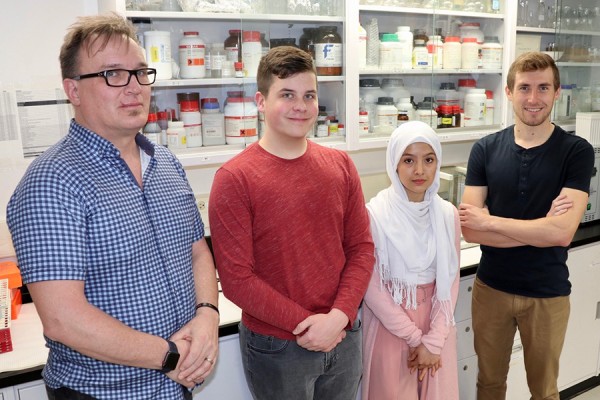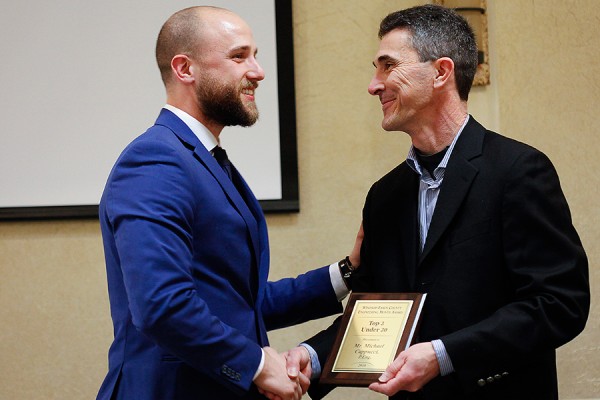When the rains eventually blanket northwest Costa Rica, ushering in the country’s wet season, a booming chorus of yellow toads will fill the tropical forest.
And the moment that rain starts to fall, UWindsor’s Katrina Switzer will race to a pond in Santa Rosa National Park where she’ll match 3D printed “Robotoads” with unsuspecting mates.
“The Neotropical Yellow Toads have a large breeding event that really only happens once a year during the first massive rainfall,” Switzer explained, adding the rain usually starts falling in the middle of the night.
“You can hear the toads from several kilometres away and as you’re walking to the pond, trying not to step on toads, you look up and see this beautiful sea of yellow.”
Switzer, who’s completing her PhD at the University of Windsor in biological sciences, has been in Costa Rica since the beginning of April to prepare for the intense breeding event.
Studying under the supervision of Daniel Mennill and Stéphanie Doucet, Switzer said the male toads turn from their normal dull brown to a luminous lemon-yellow during the mating ritual.
Dr. Mennill and Dr. Doucet’s previous research revealed that male toads transition to their yellow state to help males distinguish between males and females, but Switzer will be examining how females choose from the similarly coloured-males.
While in Costa Rica, Switzer lives and works in a rustic three-bedroom cinderblock house that students use for accommodations inside a national park called the Guanacaste Conservation Area.
To communicate with the outside world, she travels two kilometres down the road to a fire station equipped with wavering Wi-Fi.
“It’s my third year coming down here so by now I’m used to being this unplugged,” Switzer laughed.
“But it can be a total shock to the system for some people.”
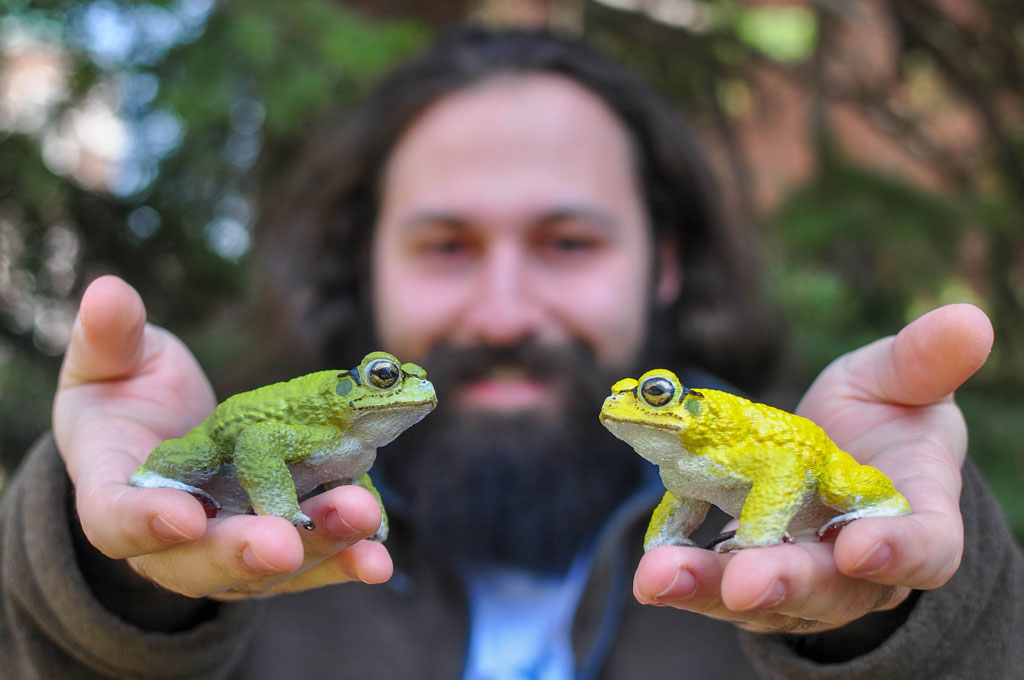
UWindsor biological sciences master's student Lincoln Savi displays his 3D-printed Neotropical Yellow Toads.
While she waits for the rain, Switzer has been creating triangular arenas where she’ll place two male robotic toads of two slightly different colours and a wild female toad.
The toads were 3D created by biological sciences master’s student Lincoln Savi and carefully modelled to the exact shades of yellow for the research project.
Savi said he created the 3D toad by taking photos during his fieldwork in Costa Rica last year and using the process of photogrammetry to take measurements.
“The photos only really covered his back, up his spine and to his head,” Savi explained.
“I then had to do more traditional digital sculpting and merge the two which was a lot of work.”
Switzer said through data from Mennill and Doucet, they were able to capture the colour of the top 10 per cent and bottom 10 per cent of natural toad colour variation.
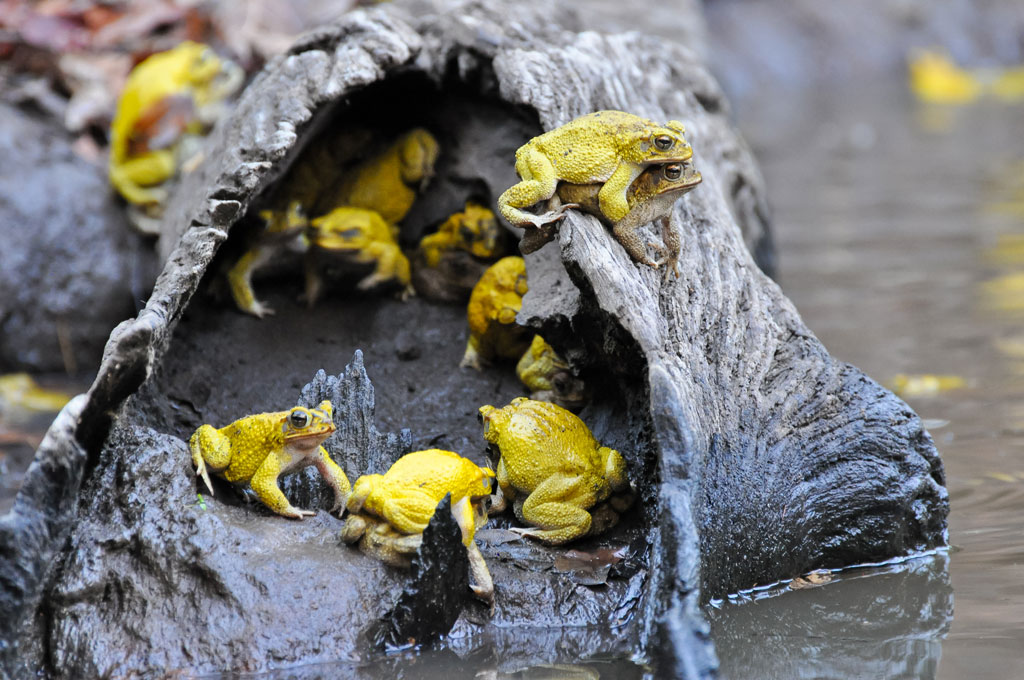
The male Neotropical Yellow Toad changes from a dull brown to a vibrant lemon-yellow during the short mating season.
Previous studies of the Neotropical Yellow Toad have been completed by hand-sculpting toads from plasticine or modeling clay. But Switzer said the realistic models, with small motors to mimic the movements of a living amphibian, should result in a stronger reaction from the toads.
“We’ve had a previous master’s student use clay models that he pulled with a string and he was still able to get a strong reaction,” Switzer said.
“But I’m hoping that if we are trying to see if they can pick up on subtle differences, then having realistic models will be the best way to detect it.”
Savi said he had such a positive response from the 3D toads, that he’s launched his own business called Savi Made.
“It’s an interesting way of still being involved in research while focusing on a more creative aspect of it,” he said.
By Dylan Kristy

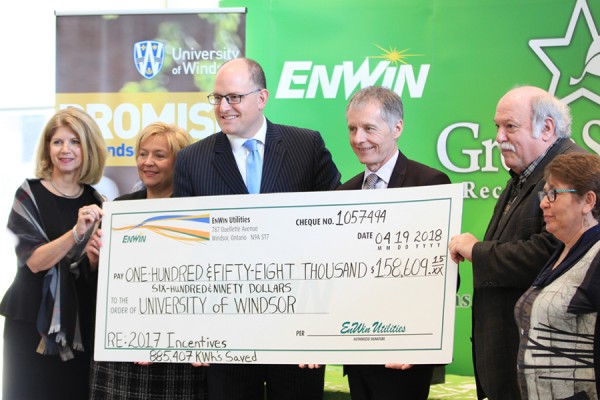 UWindsor VP Sandra Aversa, Enwin CEO Helga Reidel, Windsor mayor Drew Dilkens, UWindsor president Alan Wildeman, facilities manager Danny Castellan, and sustainability advocate Tanya Basok pose for a photo with a rebate cheque from Enwin Utilities on Thursday, April 19. The University received the utility’s GreenStar award for making conservation a priority on campus.
UWindsor VP Sandra Aversa, Enwin CEO Helga Reidel, Windsor mayor Drew Dilkens, UWindsor president Alan Wildeman, facilities manager Danny Castellan, and sustainability advocate Tanya Basok pose for a photo with a rebate cheque from Enwin Utilities on Thursday, April 19. The University received the utility’s GreenStar award for making conservation a priority on campus.





